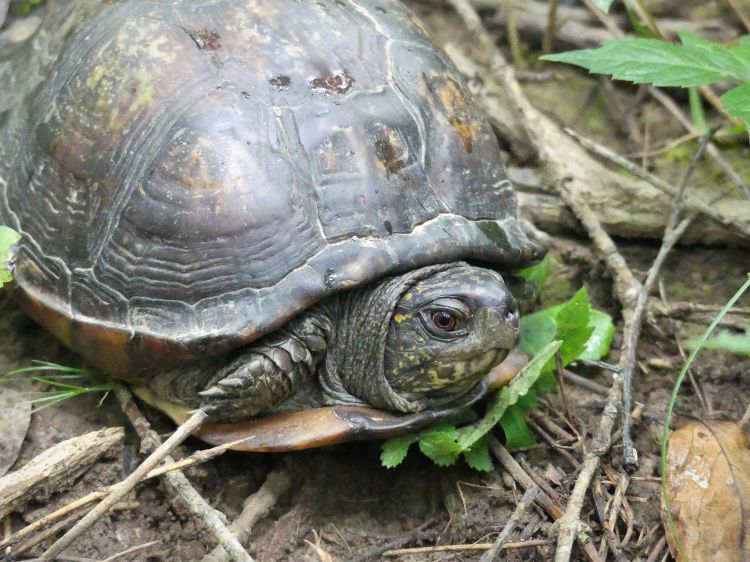
The first time I met this turtle was about eight years ago. We were walking in the forest with our then pre-teen children and trying to get them to take an interest in their surroundings. So we offered five dollars to the first one who spotted a Box turtle. I already knew a goodly number of boxies lived in this little forest, and was not surprised when ten minutes later my son yelled in triumph upon finding this big old female.
My son is in college now and looks very different from the kid he was then. But those eight years meant very little to this box turtle, who I’m guessing is at least fifty years old and likely a decade or two past that. We may be the same age, she and I, which is an intriguing thought since I’ve hung out in these woods since I was a teen.
She has seen changes to her home, as the tree canopy closed over what used to be a more open landscape. Invasive Bush honeysuckle came to dominate the understory, creating deep shade. Now, ash trees are falling, the honeysuckle will be all gone in three more years, and the forest is once again becoming an open grassy woodland. Does any of this matter to her? She has spent her decades in a home range no bigger than a football field, and other than finding a sunny place to dig her nests each summer, she has likely not left it.
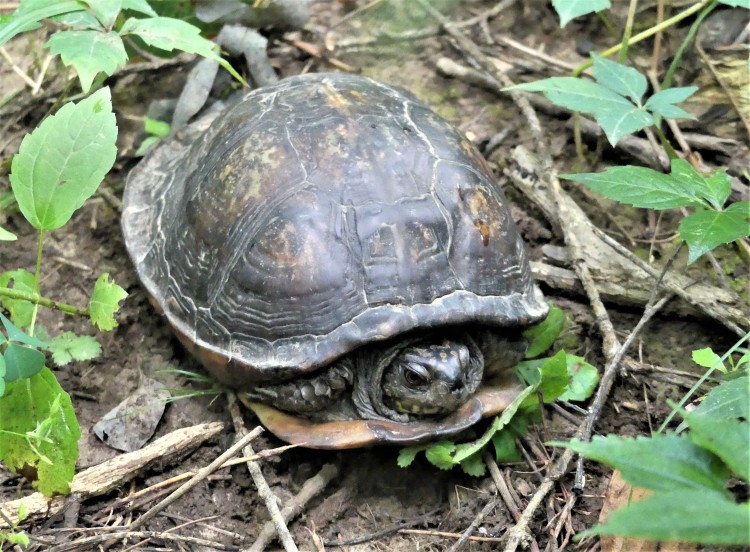
Our second meeting was yesterday morning. She was crossing the trail after a rain, probably out for breakfast since the snails and earthworms were active. Trying to take her picture, I realized the memory card was not in the camera. So I took her for a quick visit to my house, where she could also be weighed. With my son helping balance her upside down on the scale, she registered a whopping 895 grams – about twice the weight of the average adult Box turtle!
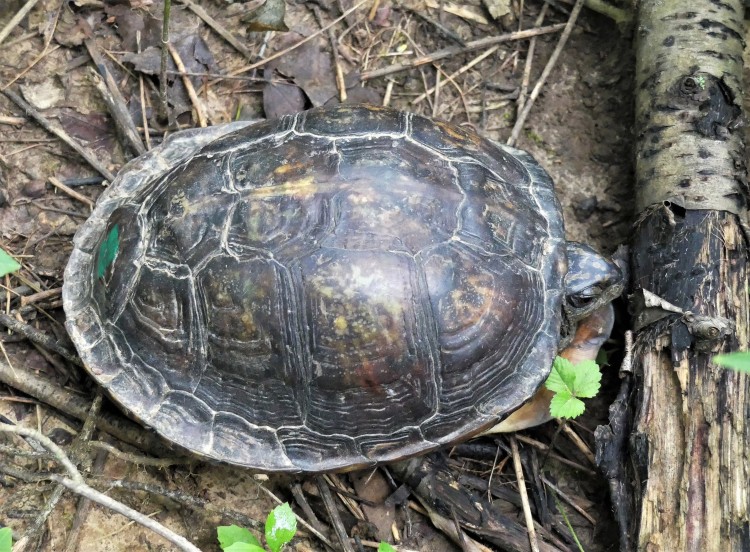
But large size alone does not equate to age; I have met younger male turtles almost as big. So how does one recognize advanced age in an animal like a Box turtle that looks old even when it’s young? The image above shows some unique characteristics that most older turtles seem to share. The first is the amount of wear on the carapace and plastron (top and bottom of the shell). The older a wild Box turtle gets (at least the ones I’ve seen that live in forests) the more worn its shell becomes from crawling over and under branches, logs and rocks.
Many people (and I used to be one of them) believe that growth rings on a Boxie’s individual scutes (scales) can be used as an indicator of age, much like tree rings. But turtle scutes apparently don’t make convenient annual growth rings – rather, the rings develop in response to nutrition and other environmental factors. I know this because to fact-check my writing I waded through a very long technical article titled “Estimating Age of Turtles from Growth Rings: A Critical Evaluation of the Technique.”

Another characteristic that seems typical of old boxies is the degradation of the usually crisp, often intricate patterning found on young and middle age turtles. The three older turtles below are unique for the amount of wear and simplification of patterning on their carapace. Two of them also have a wide, upturned rim on the rear of their carapace, as does the female I met yesterday.
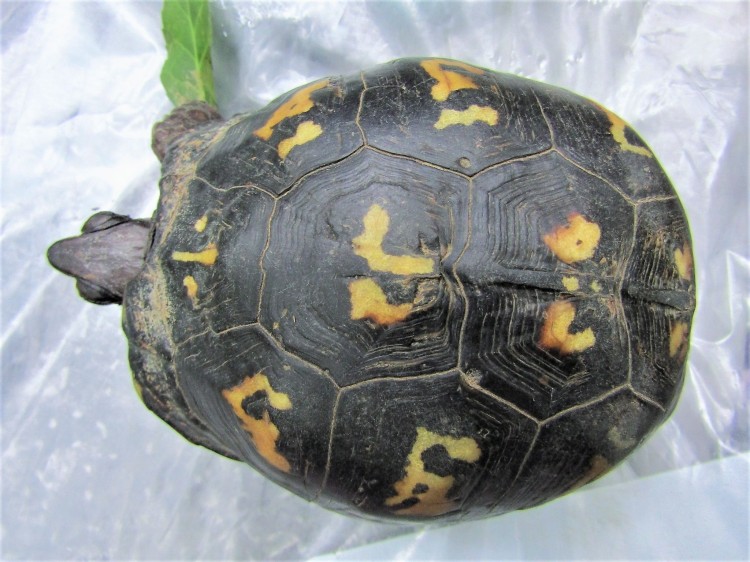
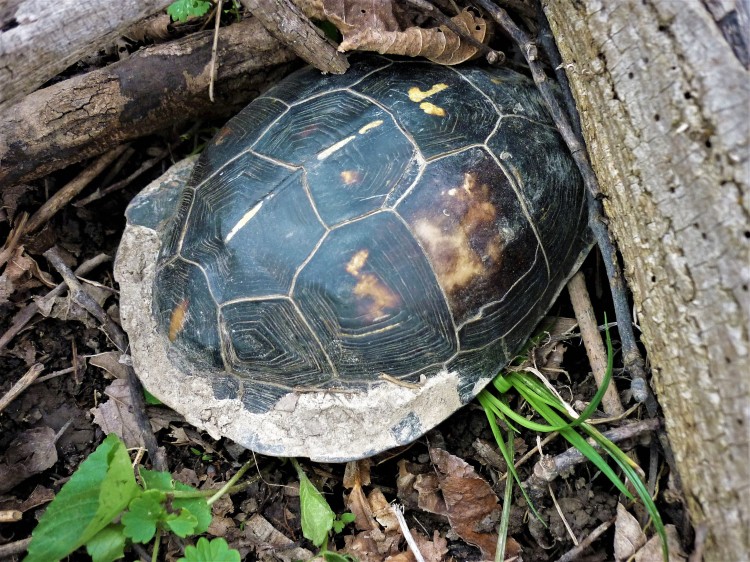
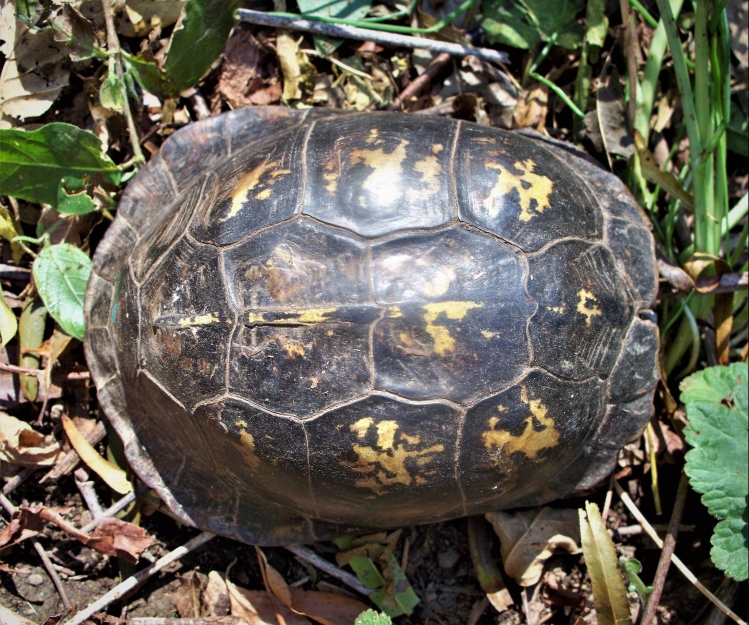
Old female turtles unfortunately are rare in this forest, surrounded as it is by roads and mowed parkland. Mowers are particularly dangerous for female boxies, since they often venture out to the sunny forest edges that border meadows and fields to dig their nests. Although nests are regularly plundered and baby turtles eaten by raccoons and other meso-predators, I’m hoping the old female has over her many nesting seasons produced a good number of descendants.
It would be interesting to know how many of the turtles of this forest are related to her. Considering that female Box turtles don’t even reach sexual maturity till they are ten years old, she may still be laying viable eggs. After all, turtles are some of the oldest mothers on earth!
https://www.loopjamaica.com/content/100-year-old-turtle-has-18-hatchlings-emperor-valley-zoo-1
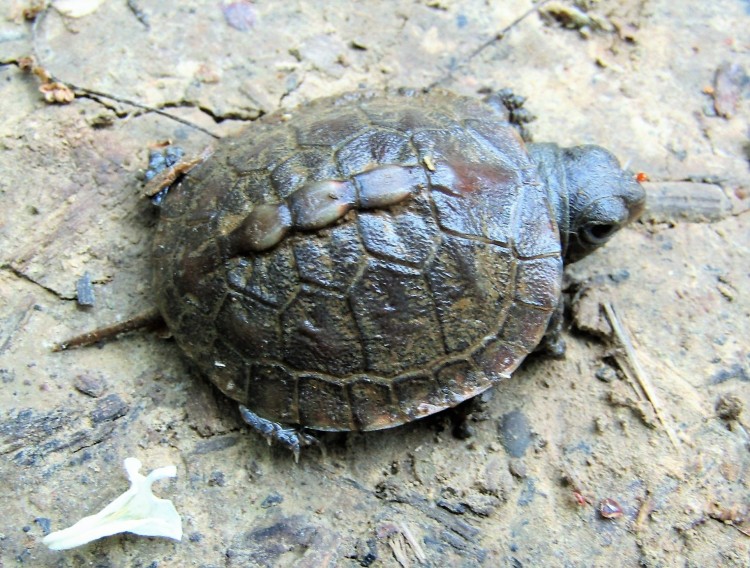
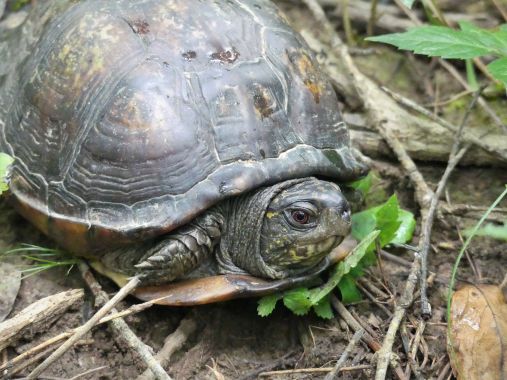
Bruce Morgan
As a fellow who has had box turtles all my long life I would say she looks old but not ancient, I would guess 60-70 years, but I have seen some that appeared to be much more than 100 years old. I once purchased a three toed box turtle from a roadside zoo because it was so obviously ancient, enormous, completely white without any pattern, and rubbed smooth down to the bone. It was a big mistake. Despite the fact that I put her into isolation she was carrying a communicable disease, probably ranavirus, which wiped out my entire collection. Box turtles are experiencing a catastrophic decline here in Florida, mostly due to disease, but also roads. We are watching the world’s coolest turtle go extinct before our very eyes.
LikeLiked by 2 people
oneforestfragment
I am so sad to hear that Florida Box turtles are declining this fast! It’s not a good situation for them anywhere with increasing habitat fragmentation. This little urban population is sheltered from roads by a deep channelized creek and open parkland, but mowers are definitely a risk.
LikeLike
Joseph Jannuzzi
I brake for Box turtles. Concrete curbs along highway ramps are death traps for these little things. I stop and try to figure out what direction they were headed before they ended up against a curb and unable to continue, then send them in the direction I think they wanted to go. Used to see them everywhere when I was a kid but even modern housing tracts are set up to eliminate reptiles and amphibians, too sterile, everything to facilitate mowing and automobile egress.
LikeLiked by 2 people
oneforestfragment
You are so right, roads and habitat fragmentation are causing continual Box turtle population declines. Also, the increase of mesopredators like raccoons in fragmented areas and near human habitation means many more nests are dug up.
LikeLiked by 1 person
Ken
Love this post. I have a 5yo daughter, and gonna try $5-for-a-turtle next time we are in the forest.
You do a good job of trying capture the turtle’s point of view: thinking about how she relates to the world so differently than we do. Slower (obviously), but something about age and range affecting how she thinks about the changes in the forest. Does she notice them?
LikeLiked by 1 person
oneforestfragment
Thanks Ken! The money-for-turtles thing may seem odd to some folks, but I know parents understand. Makes it a bit like a treasure hunt. From their vantage point at ground level, it’s interesting to wonder how Box turtles view their homes. They are sadly very poorly equipped by evolution to cope with the human world.
LikeLike
M
Hope she lives many more years in the forest to continue the species. I hope future generations can see a live box turtle and not just a stuffed one like the dodo bird.
LikeLiked by 1 person
oneforestfragment
Me too! Though boxies seem to be thriving in this little fragment of a forest, there are many places they are not.
LikeLike
Anonymous
Mike Smith sorry this android is hard for me to work.
LikeLike
shoreacres
The thought of a turtle living in such a small area is somehow both amazing and amusing. We think we always need more-more-more, but she has just enough, and still is thriving.
LikeLiked by 1 person
oneforestfragment
I’m so glad this little population of turtles has everything they need in this forest in the city. Something I didn’t mention in the post, but important for the Box turtle diet – snails are so abundant that it’s nearly impossible to avoid crushing scores of them just walking a quarter mile down the trail on a damp morning!
LikeLiked by 1 person
shoreacres
Escargot for turtles! Who knew? (Well, you — but not me.)
LikeLiked by 1 person
oneforestfragment
I have read they are a popular food, and the calcium they provide is a valuable nutrient for Box turtle shell growth. Having met many a turtle with snail slime on its chin I can verify this. There are two boxies living in an enclosed outdoor habitat at the nature center, and I collect snails along the trail for them. They strike at this much appreciated snack with surprising speed. Box turtles can be very fast when it comes to live food!
LikeLiked by 1 person
EEC Forest Stewardship
thank you for these pictures and observations. Box turtle laments are so true; in early childhood (Western Oklahoma)- my father’s land was right in the middle of turtle migration paths- oddly, at the top of a great hill. We’d see 10 turtles in an afternoon, gathering along the edge of the tress in the leafy duff of our homestead planted sycamore. Dad has not seen a turtle in decades, and sadly, I don’t think we ever will again. One third of all plants and animals in another 50 years? Mass extinction; here we go again.
LikeLiked by 1 person
oneforestfragment
Yes, Boxies are declining in so many places! Those of us who care about other species will keep plugging away, doing what we can despite the odds.
LikeLike